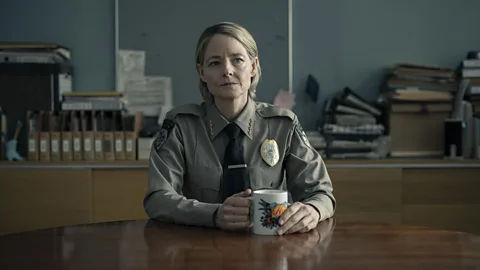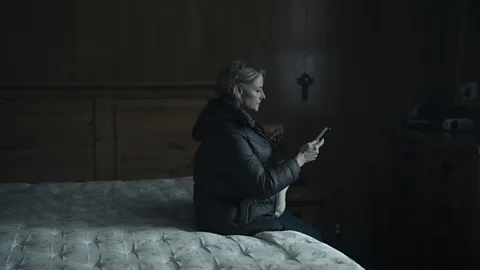By Michael HoganFeatures correspondent

 HBO
HBO
The HBO detective drama wrapped up with a dramatic finale which controversially left fans with some big questions. But it was all the better for that.
Last night saw the finale of one of the most talked-about TV dramas of the year so far, the latest instalment in the True Detective franchise, Night Country. But as the Alaska-set police procedural came to its killer climax, it left some of its mysteries to linger tantalisingly – something guaranteed to frustrate some fans, but which was the marker of a bold series that had confidence in its own semi-rational, semi-mystical storytelling.
Warning: this article contains spoilers for the finale of True Detective: Night Country
More like this:
Certainly, the fourth season of HBO’s crime anthology undoubtedly represented a return to form after the turgid second season and forgettable third. While never quite hitting the heights of the stellar debut run, it worked brilliantly as its negative image – a “dark mirror”, as showrunner Issa López has called it. Rather than two mismatched males investigating deaths in America’s sun-scorched Deep South, López gave us two mismatched females investigating deaths in the frozen far North.

 HBO
HBO
The double act of a mid-“McConaissance” Matthew McConaughey and Woody Harrelson was a tough act to follow – as the casts of seasons two and three learnt the hard way (sorry, Vince Vaughn) – but Night Country’s two leads were outstanding. Jodie Foster showed her Oscar-winning pedigree as twitchy, troubled police chief Liz Danvers, while boxer-turned-actress Kali Reis delivered a star-making turn as Danvers’ reluctant sidekick, state trooper Evangeline Navarro.
It was thrilling and chilling, beguilingly atmospheric and beautifully shot. An extended 75-minute climax delivered jump-scares and nail-gnawing tension in those creepy ice caves outside the fictional town of Ennis, before giving the normally macho crime genre a feminist twist by revealing who killed the eight scientists found in a deep-frozen “corpsicle”.
In a rug-pull few saw coming, it was the Native Alaskan women who worked as unseen cleaners at Tsalal Arctic Research Station and low-paid labour at the local fish factory. They wreaked revenge for midwife Annie K’s brutal murder and the indigenous community’s exploitation by the corrupt Silver Sky mining company, before closing ranks. In a show of solidarity, Danvers and Navarro agreed this version of events was “just another story”, instead classifying the deaths as accidental due to a slab avalanche.
There have been three major bones of contention throughout the series, both for viewers and critics. The first was whether this chapter truly belonged under the True Detective umbrella. It was the first season without a writing credit for creator Nic Pizzolatto, sure, but Mexican filmmaker López breathed new life into the franchise. She honoured her own vision while creating something in keeping with the spirit of the anthology. Her work definitely deserves its on-brand status.
The second sticking point was Billie Eilish’s theme song, Bury A Friend, which some viewers had a visceral reaction against. However, López listened to Eilish albums on a loop during lockdown and admits this leaked into her writing, so who are we to argue.
The third niggle, though, is knottier and more nuanced. The six-part series mixed crime drama with supernatural mystery, but did it do so successfully? Did one detract from the other? And what exactly in the finale was real and what was other-worldly?

 HBO
HBO
In an interview published following the finale, López told the LA Times that the show’s lingering mysteries can either have a supernatural or rational explanation, depending on which reading you prefer.
For example, how did Annie K’s severed tongue end up at the research station six years after she died? Well, either corrupt police officer Hank cut it out when he dumped her body, and the townsfolk found and froze it before placing it in the station as a mark of their revenge – or it’s an unexplainable incident, that also acted as a metaphor for Annie’s story finally getting told, after being silenced and marginalised for so long. Meanwhile the recurring spiral seen in various guises throughout the six episodes was either a callback to previous series – it having originally appeared as the symbol of season one’s horrific cult – a fossilised natural occurrence or an ancient warning sign. Maybe all three.
Ghosts were another running theme. Several characters experienced visions of deceased loved ones. Such hauntings were another way of having the characters confront the past, and deal with guilt and grief. The one-eyed polar bear that Danvers encountered could be seen to represent her son Holden, who she lost in a car crash and who owned a lookalike toy. Navarro was visited by both her mother and sister, symbolised by rogue oranges appearing at her feet. Oranges also famously foreshadowed death in the Godfather films.
Then there was the question of what happened to Navarro. The season’s final moments saw Danvers being interviewed about her colleague’s disappearance. As we saw Navarro walking towards the sea, it was left ambiguous as to whether she had taken her own life. Whatever the case, it was suggested, both these tormented women eventually found peace. “Nobody ever really leaves Ennis,” concluded Danvers, while a final shot saw her and Navarro in a lakeside cabin together – the latter either there in body or spirit.
López credits Stanley Kubrick’s The Shining, John Carpenter’s The Thing and Ridley Scott’s Alien as inspirations. The series also had shades of David Lynch and the Coen brothers. None of the above deal in easy answers. Season one of True Detective had Carcosa and The Yellow King, “light versus dark” and “time is a flat circle”. López nodded to the latter two riddles and added a few of her own for good measure.
She has expressed hope that viewers will make up their own minds. “It’s for you to decide,” she told Vulture. “In life, you don’t always get all the answers. Some of them are for you to figure out. I’m not going to do all the homework for you.” She called this ambiguity “my gift and my curse” to the viewer, saying we should each decide how logical or how fantastical we want it to be: “To walk a tight line between genre and realism is my favourite hurdle to try to surpass. My preferred option is a little bit of both.”
Ultimately, the case was solved but with certain aspects left tantalisingly vague. How you feel about that will largely depend on your tolerance for cryptic puzzles. If you like stories all tied up with a neat narrative bow, you might have found the finale frustrating. However, if you’re happy to discuss and debate, to bring your own interpretation and be left with food for thought, the Night Country finale was a triumph.
If you liked this story, sign up for The Essential List newsletter – a handpicked selection of features, videos and can’t-miss news delivered to your inbox every Friday.
If you would like to comment on this story or anything else you have seen on BBC Culture, head over to our Facebook page or message us on Twitter.





